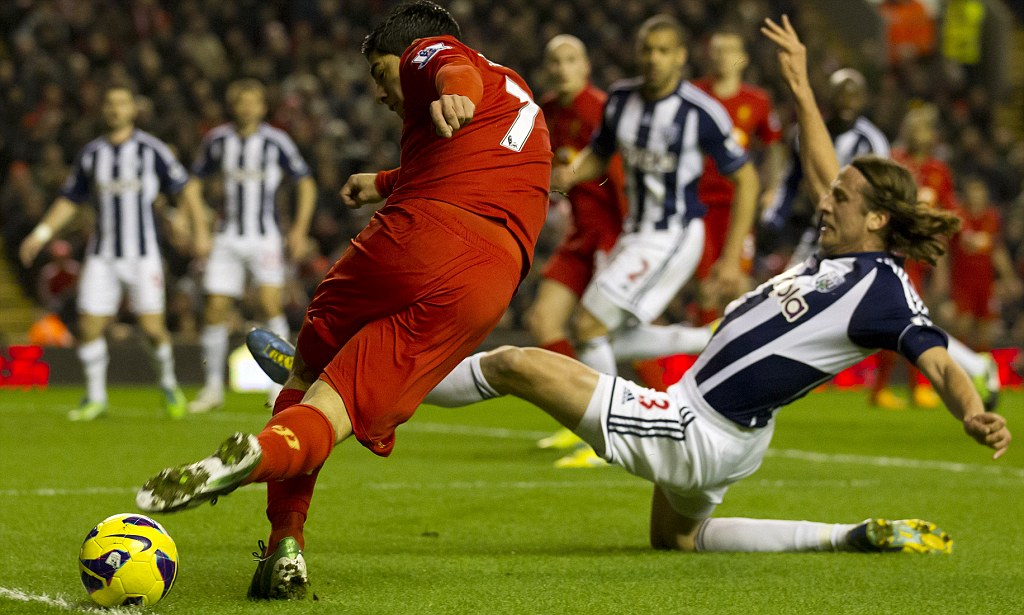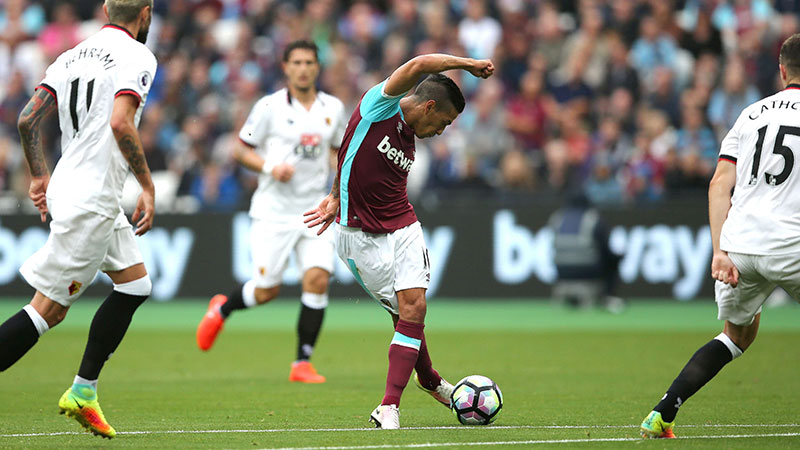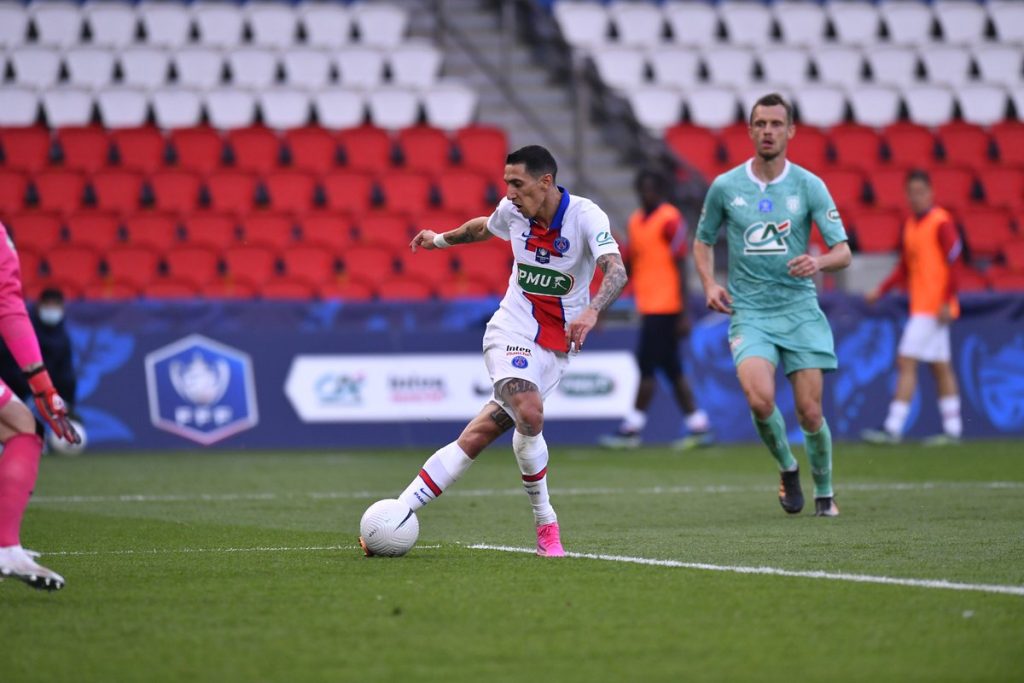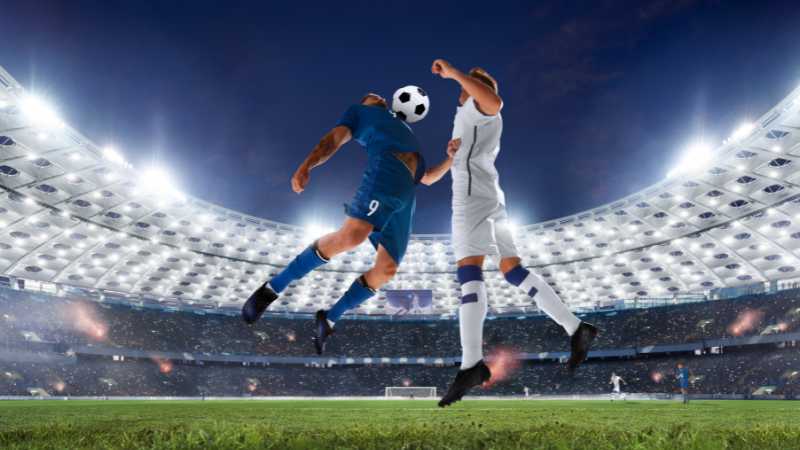Football is more than just a sport, it’s an art form. And within this art, there are certain techniques that have become legendary. One such technique is the rabona, a move that has captivated audiences and left opponents in awe.
This technique is a football technique where a player kicks the ball with their leg behind the standing leg, creating an illusion of crossing or shooting with the opposite foot. This move requires a high level of technical skill, balance, and coordination, making it challenging to execute. However, when done correctly, it can be a powerful weapon on the field.
In this article, we will delve into the history of the rabona, how it’s executed, and its variations. We will also discuss its effectiveness and provide tips on how to master this iconic football technique. So, whether you’re a professional footballer or a passionate fan, read on to discover the secrets of the rabona.
History of the Rabona
Like many other football techniques, the origins of the rabona are somewhat disputed. Some sources claim that it was first used by Argentinean footballer Ricardo Infante in the 1940s, while others credit Italian player Giovanni Roccotelli as the inventor in the 1950s. However, the move gained worldwide recognition when it was famously executed by Argentinian football legend Diego Maradona in a match against England in the 1986 World Cup.
Since then, this technique has been associated with South American footballers, who are known for their flair and creativity on the field. Players like Ronaldinho, Neymar Jr., and Lionel Messi have all used the rabona in matches, adding to its mystique and popularity.

The origins of the rabona, like many football techniques, are subject to some dispute
How to Execute the Rabona
Executing this technique may seem effortless when watching it performed by professionals, but in reality, it requires precision and practice. The following are the basic steps to execute a rabona:
- Plant your standing leg firmly on the ground.
- Swing your non-dominant foot behind the standing leg.
- Strike the ball with the inside of your dominant foot.
- Follow through with your swing.
It’s essential to note that the key to a successful rabona is the element of surprise. The move should be executed quickly and without hesitation to catch the opponent off guard.
Variations of the Rabona
Over time, footballers have developed various variations of the rabona, making it even more unpredictable and challenging for defenders to anticipate. Some of the most common variations include:
- The Blind: This variation involves the player looking in one direction while striking the ball with the opposite foot. It can be used to deceive opponents or to pass the ball behind the standing leg.
- The Reverse: In this version, the player strikes the ball with their non-dominant foot behind the standing leg, creating an effect similar to backheeling the ball.
- The Fake: As the name suggests, this variation involves faking a rabona and then using the dominant foot to strike the ball.
- The Double: This is when a player executes a rabona with both feet consecutively, usually used for passing the ball between the legs of an opponent.
The Effectiveness of the Rabona
This technique may be a show-stopping move, but what makes it truly effective on the field? Here are some reasons why the rabona is considered a valuable technique in football:

The crucial factor for executing a successful rabona is its element of unexpectedness
Element of Surprise
As mentioned earlier, the key to a successful rabona is the element of surprise. Most defenders are not expecting a player to strike the ball with their non-dominant foot, making it difficult for them to anticipate and block the shot or pass.
Versatility
The rabona can be used in various situations on the field, whether it’s shooting, crossing, or passing. With its deceptive nature, the move can also be used to create space for the player and their teammates.
Aesthetics
Let’s face it, the rabona is an eye-catching move. Fans love to see players pull off this technique, and it adds a touch of flair and excitement to the game.
When to use the Rabona
Although this technique can be a lethal weapon on the field, it’s essential to know when to use it. Because of its complexity, attempting a rabona in a critical situation can backfire and lead to a loss of possession or even conceding a goal. Therefore, it’s crucial to assess the game situation and execute the move only when necessary.
Mastering the Rabona
To master the rabona, you must first have a strong foundation in basic football techniques such as shooting, passing, and dribbling. It’s also essential to practice the move repeatedly until you build muscle memory and can execute it confidently in a game.
Here are some tips to help you master this technique:
- Practice with both feet: The rabona requires balance and coordination from both legs, so it’s crucial to train with both your dominant and non-dominant foot.
- Focus on accuracy: Accuracy is more important than power when executing a rabona. Start by aiming for a specific target and gradually increase the difficulty as you improve.
- Work on timing: Timing is everything in football, and this applies to this technique as well. Practice timing your swing and follow-through to get the best results.
- Use cones for drills: Setting up cones on the field can help you practice your accuracy and timing. You can also use cones to create obstacles and simulate real-game scenarios.
- Watch and learn: Observing how professionals execute the move can give you a better understanding of the technique. Analyze their movements and try to replicate them in your training.
Top Rabona Moments in Football History
This technique has been responsible for some of the most iconic moments in football history. Here are just a few of them:
Diego Maradona’s goal against England in the 1986 World Cup
This is arguably the most famous rabona moment in football history. In the quarterfinals of the 1986 World Cup, Argentina’s Diego Maradona scored a stunning goal against England with a shot, securing Argentina’s victory and a place in the semi-finals.
Ronaldinho’s assist to Lionel Messi in the 2010 Champions League
In a match against Arsenal in the 2010 Champions League, Brazilian legend Ronaldinho pulled off an incredible rabona pass to his Barcelona teammate, Lionel Messi. The pass set up Messi for a goal, showcasing the beauty and effectiveness of this technique in one play.
Erik Lamela’s goal against Asteras Tripolis in the Europa League
In a Europa League match in 2014, Tottenham Hotspur’s Erik Lamela scored a jaw-dropping rabona goal from outside the box. The goal went viral and was even nominated for the 2014 FIFA Puskas Award for the best goal of the year.
Other Football Techniques Worth Mentioning
While this technique may be one of the most iconic football techniques, there are several others worth mentioning, such as:
- The Panenka Penalty: Named after Czechoslovakian player Antonin Panenka, this technique involves chipping the ball delicately into the net during a penalty shootout.
- The Scissor Kick: A move where a player jumps and kicks the ball with both feet in a scissor-like motion, usually used for shooting.
- The Rainbow Flick: This move involves flicking the ball over an opponent’s head with the back of the foot and then catching it on the other side.
The Impact of the Rabona on Modern Football
The rabona has not only become a staple in football but has also influenced the way the sport is played. Here are some ways the technique has impacted modern football:

The rabona has not only become a fundamental technique in football but has also had a significant impact on the game’s style of play
Entertainment Value
The rabona has added entertainment value to the sport, captivating audiences with its unique and flashy style. Fans love to see players execute this move and often cheer and applaud when it’s successfully performed.
Increased Creativity
With the rabona’s popularity, more and more players are incorporating it into their playing style. Its variations have also inspired players to come up with their own creative moves, making football even more exciting to watch.
Evolution of Defending Techniques
Defending against this technique can be tricky, which has led to defenders developing new techniques to block or anticipate the move. This has resulted in more complex and strategic defending strategies in modern football.
Football Tactics that Complement the Rabona
The rabona is most effective when paired with specific football tactics. Some tactics that complement this technique include:
- Counter-Attack: This technique can be used to quickly counterattack, taking the opponent by surprise and creating scoring opportunities.
- Overlapping Runs: When a player executes a rabona, it often creates space for a teammate to make an overlapping run, leading to a goal-scoring chance.
- One-Two Passes: This technique can be used in combination with quick one-two passes to confuse defenders and create openings in the opposition’s defense.
How the Rabona Has Changed Football Training
With the rabona’s increasing popularity, coaches and trainers have started incorporating this technique into their training sessions. Many football academies and camps now offer specialized training for this technique, helping aspiring footballers master this move at a young age.
Criticism of the Rabona
Like any other football technique, this technique has received its fair share of criticism. Some critics argue that it’s an unnecessary showboating move that can lead to a loss of possession or even injuries. Others claim that it’s not as effective as other basic techniques such as crossing or shooting with the dominant foot.
However, these arguments are often countered by the fact that this technique is a valuable tool when executed correctly. It is also a testament to a player’s skill and creativity on the field.
Injuries Caused by Executing the Rabona
As with any other physical activity, there is always a risk of injury when performing the rabona. The most common injuries associated with this technique include:
- Muscle strains: To execute this technique, a player needs to swing their non-dominant leg forcefully, which can cause strain on the muscles.
- Sprained ankles: If not executed correctly, the player’s standing leg can twist or roll, leading to a sprained ankle.
- Overextension: In some cases, players may overextend their leg while trying to strike the ball, causing strain on the ligaments and tendons.
Safety Precautions When Practicing the Rabona
To avoid injuries while practicing the rabona, here are some safety precautions to keep in mind:
- Warm-up: Before attempting this technique, make sure to warm up your muscles to prevent strains and pulls.
- Use proper footwear: Wearing appropriate football boots with good traction can help prevent slips and falls.
- Train with a partner: Practicing this technique with a partner can ensure that you have someone to support you in case of any mishaps.
- Start slowing: Begin by practicing the move at a slower pace, gradually increasing your speed and intensity as you become more proficient.
Rabona in Popular Culture
This technique has not only left its mark on the football field but has also been featured in popular culture. Here are some notable instances where this technique has been referenced or depicted:
Video Games
Many football video games, such as FIFA and Pro Evolution Soccer, have incorporated the rabona as a skill move that players can perform. This has helped popularize the move among gaming enthusiasts and introduced it to a broader audience.
Movies and TV Shows
The rabona has also made appearances in movies and TV shows, further cementing its place in popular culture. In the Netflix series “Money Heist,” one of the characters performs a rabona to escape from the police, showcasing how versatile and unexpected this technique can be.
Music Videos
Several music videos have also featured this technique, adding to its cool factor. The music video for the song “El Anillo” by Jennifer Lopez shows her executing a rabona while dressed in full football gear, paying homage to her Latin American routes.
Influential Personalities Who Have Used the Rabona
Over the years, many influential personalities have used the rabona in various forms, showcasing its universal appeal. Some famous figures who have used this technique include:
- Pope Francis: In 2014, Pope Francis showed off his football skills by performing a rabona during a charity event at the Vatican.
- Neymar Jr.: The Brazilian football star is known for his creativity on the field, and this technique is just one of the many techniques he has used to dazzle his opponents.
- Ronaldinho: The legendary Brazilian footballer is widely considered one of the best players to have ever executed this technique, showcasing his mastery of this technique in many matches.
Rabona in Advertisements
Due to its visual appeal and association with some of the world’s greatest footballers, this technique has been featured in numerous advertisements. Some notable examples include Nike’s “Write the future” ad, which features Cristiano Ronaldo performing a rabona, and Pepsi’s “Now is what you make it” commercial, where Lionel Messi executes a reverse one.
Conclusion
The rabona is more than just a football technique; it’s a symbol of creativity and innovation on the field. Its roots may be disputed, but its impact on modern football is unquestionable. From jaw-dropping goals to euphoric reactions from fans, it has become an integral part of the sport.
However, mastering this technique takes time and dedication. It requires a high level of technical skill and constant practice. But for those who can execute it successfully, it is a powerful weapon that can leave opponents speechless and fans in awe.
So, whether you’re a player looking to add some flare to your game or a fan admiring the beauty of the sport, this technique will continue to inspire and captivate for years to come. As they say, football is a game of art, and it is just one of the many masterpieces within it.








